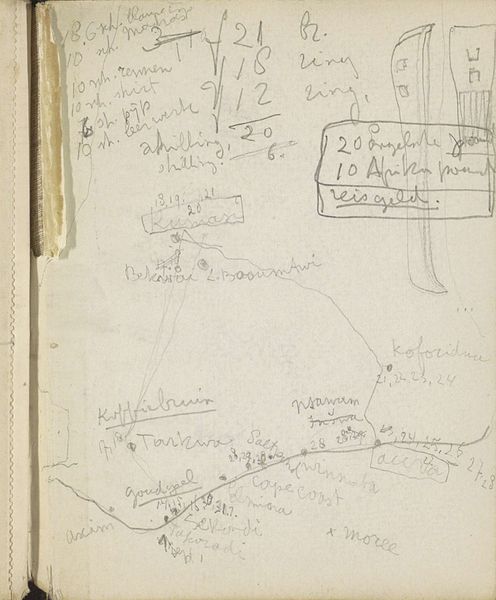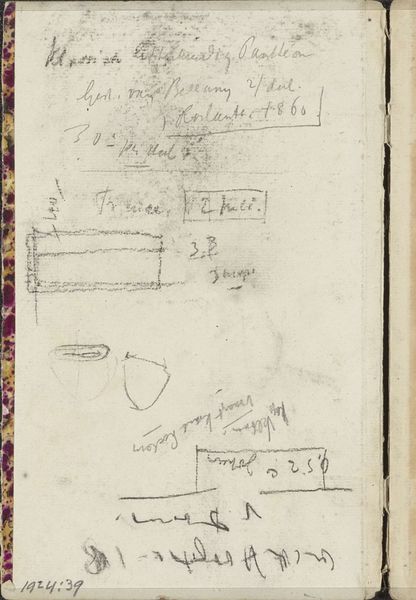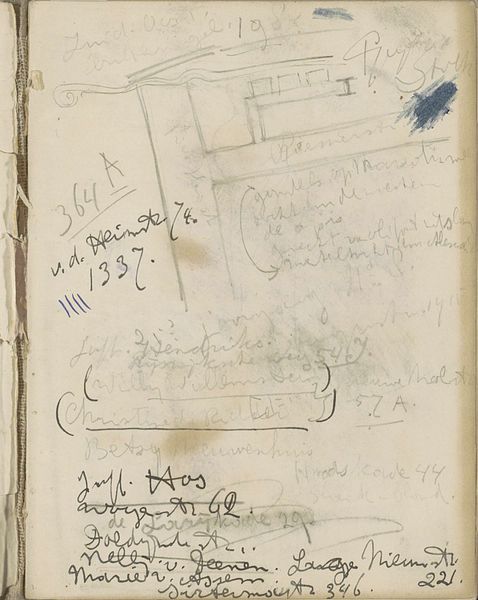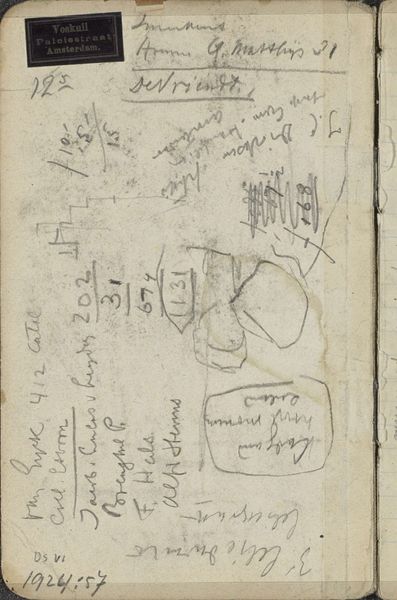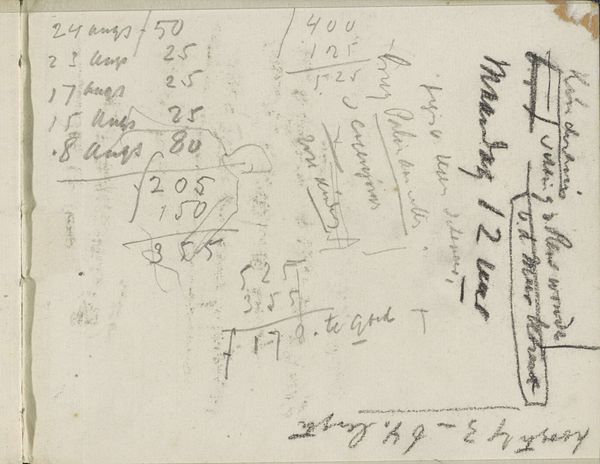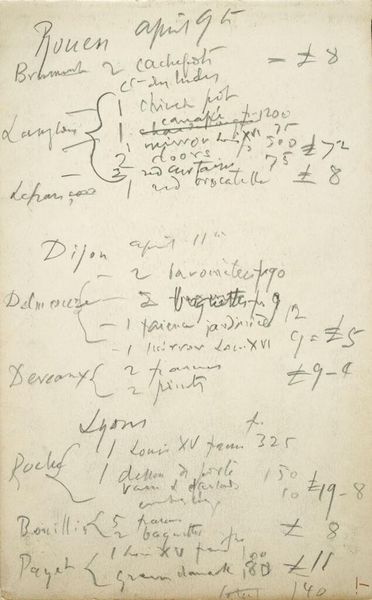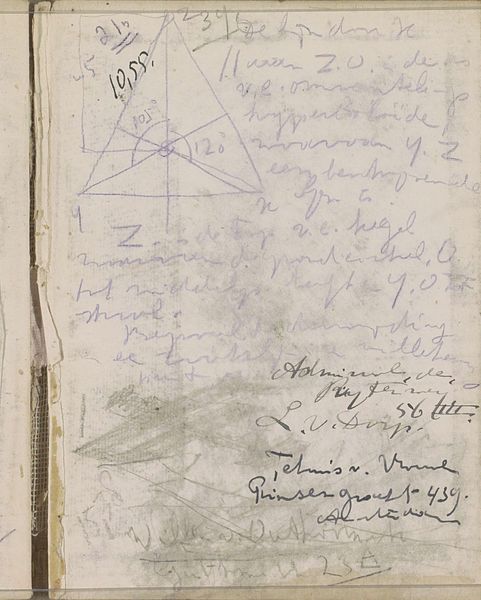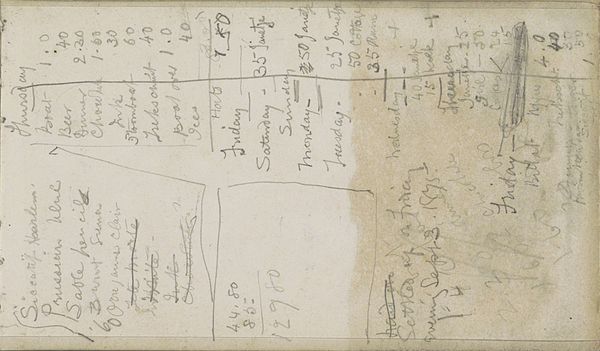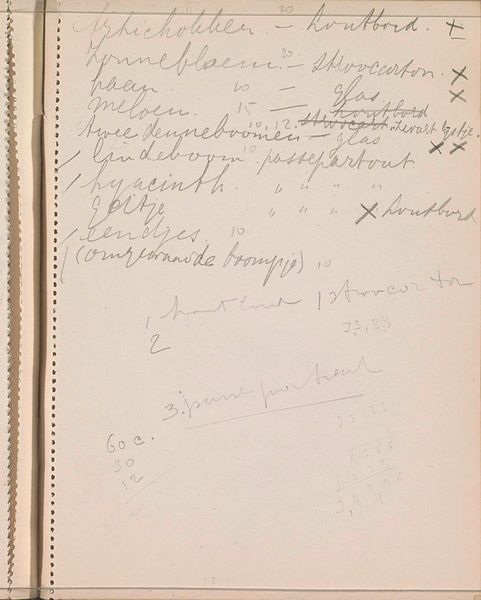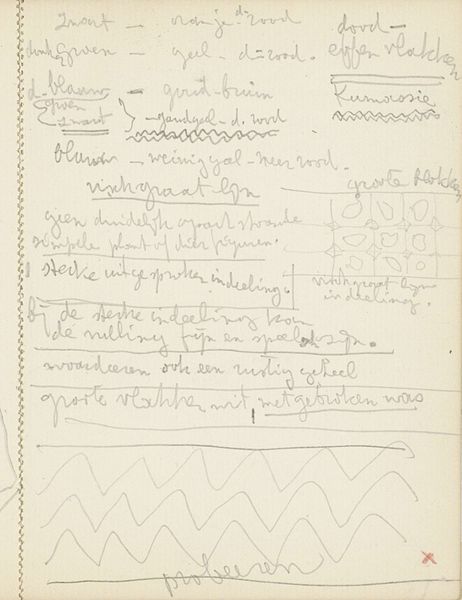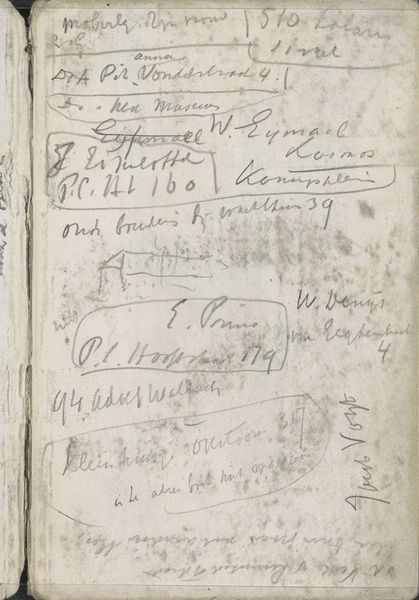
drawing, mixed-media, paper, ink, pencil
#
drawing
#
mixed-media
#
hand-lettering
#
hand drawn type
#
hand lettering
#
paper
#
personal sketchbook
#
ink
#
idea generation sketch
#
sketchwork
#
pencil
#
abstraction
#
sketchbook drawing
#
storyboard and sketchbook work
#
sketchbook art
#
calligraphy
#
initial sketch
#
monochrome
Copyright: Rijks Museum: Open Domain
Curator: This intriguing sheet of "Notities," dating between 1906 and 1945, presents a fascinating glimpse into the mind of Reijer Stolk. Currently held at the Rijksmuseum, it combines drawing and mixed media—primarily ink and pencil on paper—to create a visually dense and evocative composition. Editor: It looks like a jumble, almost… chaotic? But a beautiful kind of chaos. The writing is like music notes scattered on a page, some faded, some bolder, creating a rhythm all its own. Curator: That “chaos,” as you put it, is carefully composed, revealing layers of meaning when considered within the context of early 20th-century artistic movements. Stolk, like many artists of his era, was grappling with shifting social landscapes, including major ideological battles. His notes might allude to militarization or other conflicts—perhaps a resistance of some kind? Editor: Hmm, militarization. It feels so... intimate for something like that. You know, it's like peering into someone's brain, all the stray thoughts and doodles mingling together. "Dustojowsky"—that one stands out. The names and the fragments—they could be lyrics to some kind of melancholy song, you know? Curator: Precisely! Stolk utilizes abstraction to challenge the conventions of representation, blurring the lines between personal and political realms, between chaos and order. Note the repetitive marks, suggesting maybe lists, and the looping script, which at times leans towards calligraphy. Editor: Yes, the "looping script," that makes the names almost float away... There's a sense of something precious here, secrets being whispered across the page. It gives me this warm, melancholic vibe, like looking at an old photograph and trying to recall the stories behind the faces. The more I stare, the more it transforms! It isn't "chaotic", actually it's the memory we aren't fully having access to, like that of our Grandparents. Curator: Exactly, we can understand it like a glimpse into their most private memories, those sketches, thoughts and memories we wish we had easier access to and fuller understanding of. That’s something that can impact any contemporary reader. Editor: Beautiful.
Comments
No comments
Be the first to comment and join the conversation on the ultimate creative platform.

